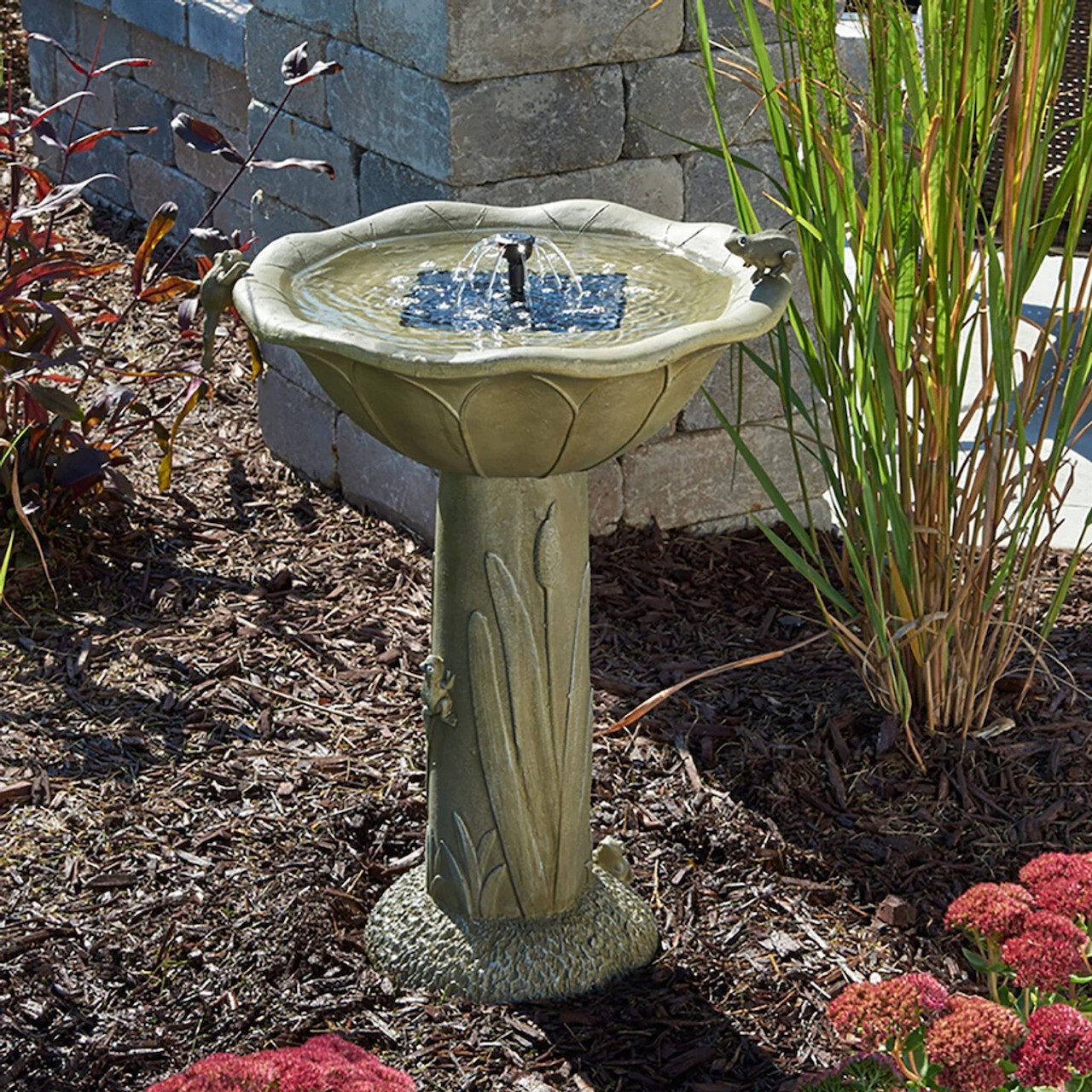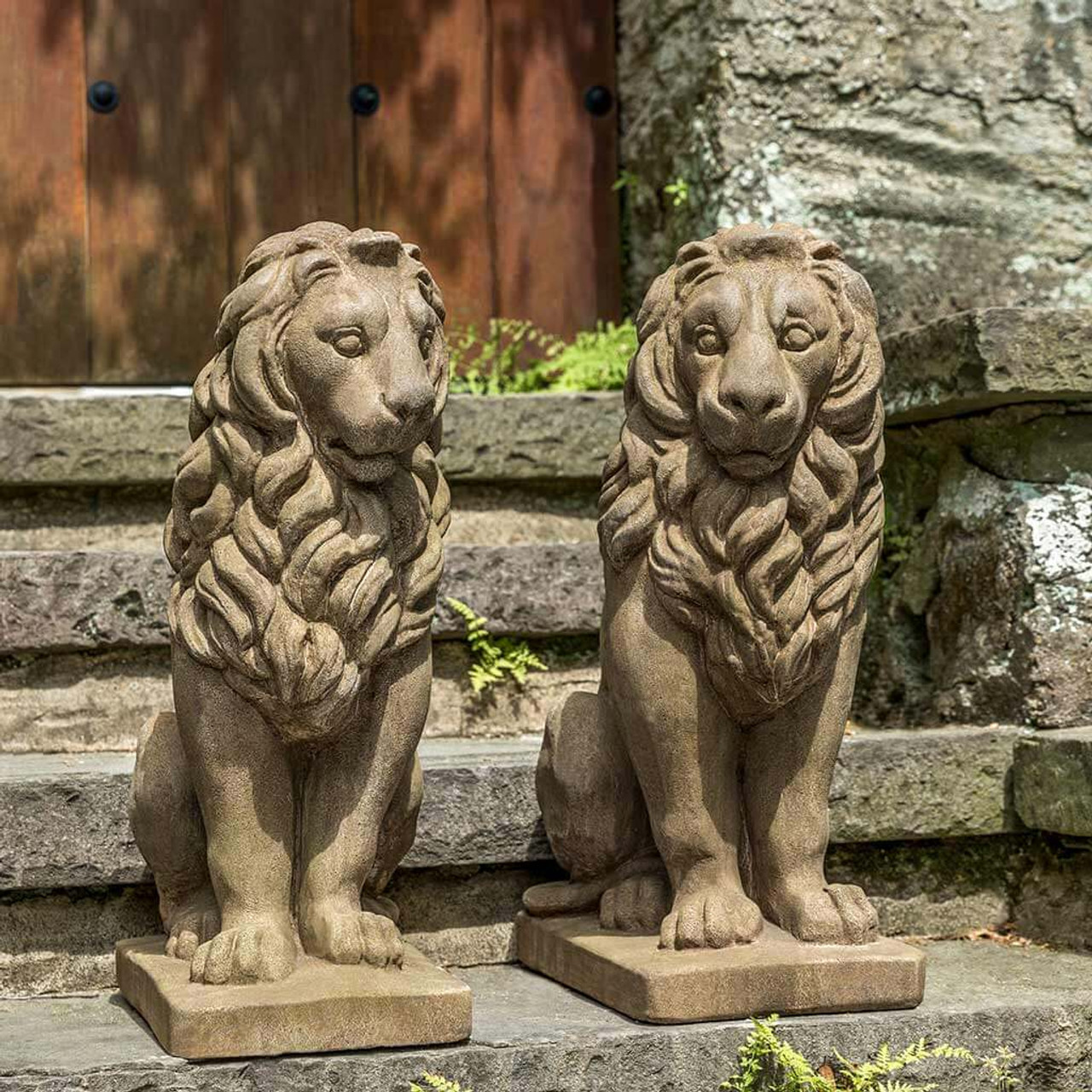As the last traces of winter fade, it’s time to refresh your outdoor space and bring your garden décor back to life. A long winter can leave fountains, bird baths, and statues covered in dirt, algae, and mineral buildup, but with a little effort, you can restore them to their original beauty.
This guide will walk you through garden spring cleaning, focusing on how to clean outdoor fountains, bird baths, and concrete statues so your yard is ready for a fresh start.

Reviving Your Outdoor Fountain
Large outdoor water fountains are often the focal point of a garden.
If your fountain has been covered for the winter, your spring cleaning routine will be much easier! Simply remove the cover, wipe away any dust or debris, and check for any signs of wear before refilling it with fresh water.
But if your fountain was left exposed, a deeper clean may be needed to remove built-up algae, mineral deposits, or debris from winter storms.
Here’s how to clean an outdoor fountain and keep it in top condition:
Step 1: Drain and Remove Debris
Start by unplugging or turning off the fountain’s pump and draining all the water. Remove any leaves, twigs, or dirt that may have settled at the bottom.
Step 2: Scrub the Surface
Use a soft-bristled brush or sponge with a mixture of mild dish soap and warm water. If you notice tough mineral deposits, a 50/50 vinegar and water solution works well to break them down.
Avoid harsh chemicals that could damage the material or harm nearby plants.
Step 3: Clean the Pump
The pump is the heart of your fountain, and keeping it clean ensures smooth operation. Remove the pump and soak it in a vinegar-water solution for 15-30 minutes, then scrub away any buildup with an old toothbrush.
Step 4: Refill with Fresh Water
Once everything is clean, rinse the fountain thoroughly and refill it with fresh water. If algae is a recurring issue, consider adding a safe algaecide or using distilled water to reduce buildup.

How to Clean a Bird Bath
A bird bath is a great way to attract wildlife to your yard, but stagnant water can quickly lead to algae growth and bacteria. Regular cleaning not only keeps it looking good but also ensures a safe space for birds.
Step 1: Empty the Bird Bath
Dump out any standing water and remove any debris like leaves, feathers, or dirt.
Step 2: Scrub with a Natural Cleaner
For a chemical-free approach, mix one part vinegar with nine parts water and scrub the surface using a stiff brush. If stains persist, sprinkle some baking soda on the surface and scrub again.
Avoid using bleach, as even small traces can be harmful to birds.
Step 3: Rinse and Refill
Thoroughly rinse the bird bath with clean water to remove any cleaning residue. Refill it with fresh water and consider placing it in a shady spot to slow down algae growth.

How to Clean a Concrete Statue and Garden Figurines
Over time, concrete statues and garden figurines can accumulate dirt, moss, and discoloration.
While weathering and moss can add to the beauty of a piece and give it a unique, natural touch, this may not be everyone’s cup of tea. If you prefer a cleaner look, here are some steps you can take.
Step 1: Dry Brush First
Before using water, brush off loose dirt and debris with a dry scrub brush or soft cloth.
Step 2: Use a Gentle Cleaning Solution
Mix a mild dish soap with warm water and scrub the statue with a sponge or brush. For deeper stains, a diluted vinegar solution can help. If mold or moss is present, a hydrogen peroxide solution (3%) can safely remove it.
Step 3: Rinse and Dry
Spray the statue with a garden hose to remove all residue, then let it air dry. If desired, apply a concrete sealer to protect it from future stains and weather damage.
Additional Tips for Spring Garden Maintenance
Spring is about fresh starts — your garden included. Apart from your garden decor, here are a few things to tackle to get your outdoor space looking its best.
Give Your Mulch a Makeover
Winter can leave mulch looking faded, compacted, or even washed away in spots. A fresh layer not only makes your garden beds look neat but also helps the soil retain moisture and keeps weeds from taking over.
Choose a natural mulch like bark or wood chips; something that will break down over time and enrich the soil. Bonus: it makes everything smell fresh and earthy.
Fix Up Pathways and Hardscaping
Stone paths and patios don’t get a winter break. Frost can cause shifting, cracks, or moss growth, making walkways slippery and uneven. Sweep away debris, pull any weeds that have popped up between pavers, and pressure wash surfaces to remove grime and mildew.
If bricks or stones have shifted, now’s the time to reset them before someone trips.
Check on Your Outdoor Furniture
Chances are, your patio furniture has been collecting dust, leaves, or even a layer of mildew. Wipe down metal, plastic, or wood surfaces with warm, soapy water. For cushions, spot clean or toss the covers in the wash if they’re removable.
And if rust is creeping in on metal furniture, a little steel wool and a fresh coat of spray paint can work wonders.
Add Some Fresh Plants
Nothing says spring like new growth. Whether you’re adding bright seasonal flowers, fresh herbs for the kitchen, or a few new perennials, now’s the time to get them in the ground or in new planters.
If you prefer to start from seed, get them going indoors so they’re ready to plant once the weather warms up.
A little effort now will go a long way in making your garden a place you actually want to spend time in. Clean things up, refresh where needed, and before you know it, you’ll be kicking back and enjoying the space all season long.

